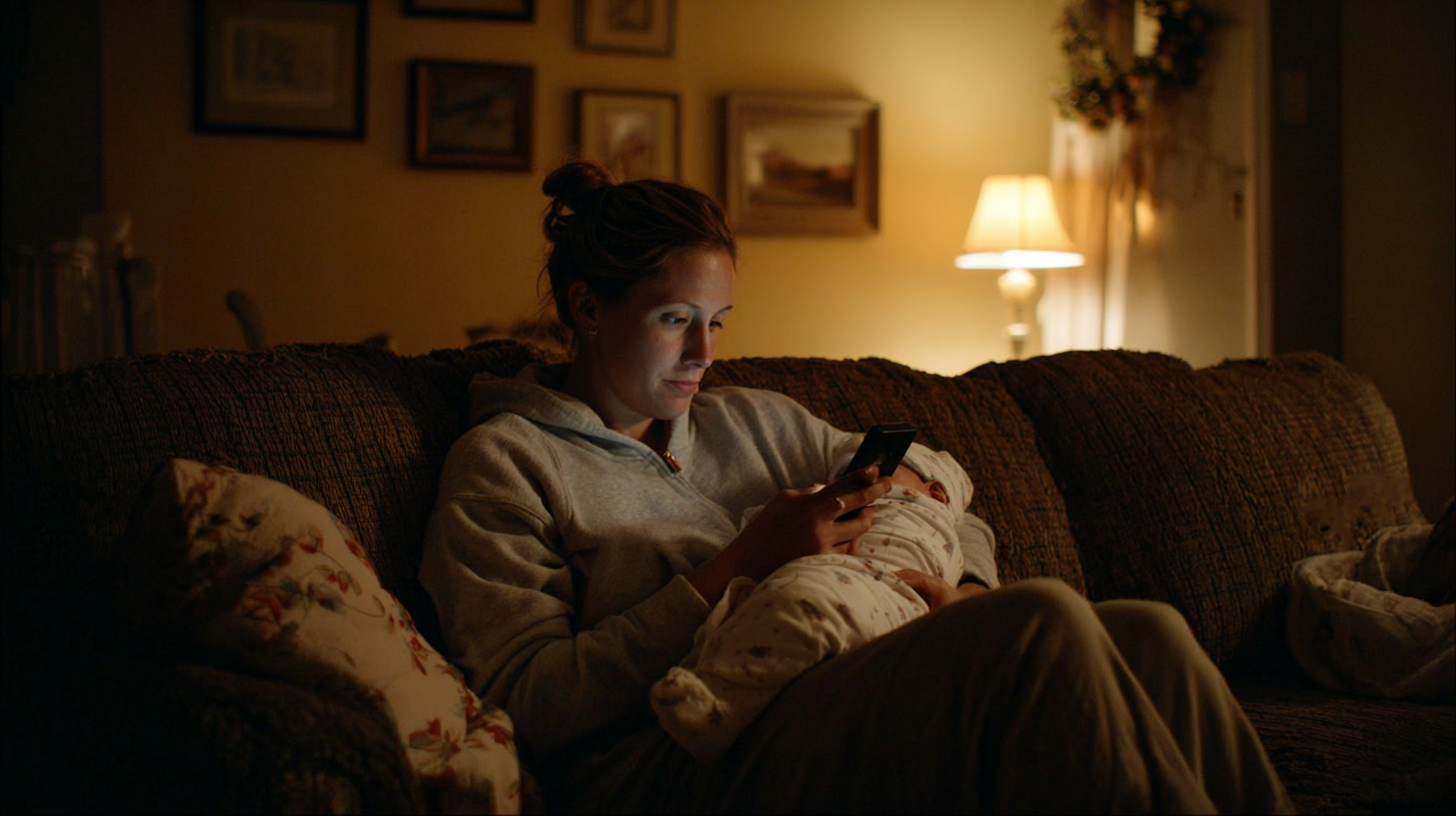15 Apps That Stop Doom-Scrolling on Maternity Leave
-
 Bethany
Bethany - 26 Jun, 2025

DOOMSCROLLING. We all do it. If TikTok is what keeps you sane during a 3 a.m. feeding, zero judgment. Get your fix. But doom-scrolling is tied to higher anxiety and sadness in new parents[1], and late-night blue-light glare can tank melatonin and wreck sleep quality[2]. So if you are looking for ways to cut back, here are some gentler ways to scroll.
This post hands you 15 apps—ranging from add-friction blockers like One Sec to hands-free joys like Libby audiobooks—that make it easier to put the phone down (or at least scroll with intention).
How These Picks Help
- Block or delay addictive apps so your brain gets a chance to veto that reflex tap.
- Replace the doom with mindfulness, learning, or audiobooks you can enjoy during baby snuggles.
- Track usage so Screen Time can roast you with real receipts when you hit four hours of Insta.
The Apps
1. One Sec
A 10-second breathing screen pops up every time you open Instagram; a Max Planck–backed study saw social use drop 57 percent[3].
2. Opal
Schedules “Focus Sessions” that lock socials on phone and desktop, then reports your saved time each week[4].
3. Forest
Plant a virtual tree; leave the app and the tree withers—guilt trip but cute. More than four million paying users swear by it[5].
4. Freedom
Cross-device blocker that nukes doom-sites on phone, laptop, and the iPad streaming Bluey[6].
5. StayFree
Android-only champ with gorgeous graphs that expose late-night binge patterns and let you set hard limits[7].
6. Flipd
“Full Lock” hides every app except calls for up to 24 hours—perfect for baby-moon weekends[8].
7. Headspace
A small prenatal trial found meditation with Headspace significantly reduced stress and anxiety in expectant moms[9].
8. Calm
Sleep stories plus postpartum-friendly breathwork; named a top sleep app for 2025 by Sleep Foundation[10].
9. Insight Timer
Huge library of free postnatal healing tracks—ideal when the baby swing already ate your budget[11].
10. Libby
Borrow audiobooks free through your local library, so you can “read” while rocking that bassinet[12].
11. Audible
The global audiobook market grew 15% to $8.3 billion in 2025—proof that hands-free stories are booming[13].
12. Duolingo
Daily five-minute lessons keep your postpartum brain buzzing, and the streak-based gamification (users are nudged to protect their daily streaks) turns language practice into a fun micro-escape during feeds[14].
13. Omnivore
Open-source read-later alternative with Markdown export, RSS, newsletters, and Obsidian sync—totally free[15].
14. RescueTime
Automatic background tracking plus Focus Sessions; featured in “Best Productivity Apps 2025” lists[16].
15. Built-In Screen Time (iOS) & Digital Wellbeing (Android)
Already on your phone and wildly under-used. Pair with Night Shift or Sleep Focus to dim blue light during 2 a.m. feeds[17].
Quick-Start Challenge
- Install One Sec + Libby today.
- Cap Instagram at two hours in Screen Time.
- Swap your midnight scroll for a Calm sleep story.
Report back in a week—your future self (and mental health) will thank you.
TL;DR
Pick two blockers, one mindfulness app, and one audiobook companion. Bye doom-scroll, hello actual rest.
References
[1]: Doomscrolling Dangers
[2]: Evening Use of Light-Emitting eReaders Negatively Affects Sleep
[3]: Social Media Usage Cut in Half Through “One Sec” Intervention
[4]: Focus Sessions
[5]: How Forest App Ranked #1 With 4 M Paying Users
[6]: Freedom – Block Websites, Apps, and the Internet
[7]: StayFree – Phone Usage Tracker & Over-Use Reminder
[8]: Flipd: Focus & Study Timer
[9]: Meditation With Headspace App Reduces Stress in Pregnancy
[10]: Calm App Review
[11]: Postnatal Meditations – Insight Timer
[12]: Libby – Borrow Ebooks & Audiobooks Free
[13]: Audiobooks Market Report 2025
[14]: 2024 Duolingo Language Report
[15]: Omnivore – Open-Source Read-It-Later App
[16]: The 18 Best Productivity Apps for 2025
[17]: Use Night Shift on Your iPhone, iPad, and iPod touch
This post is for informational purposes and is not medical advice. Always consult a qualified healthcare provider for personalized guidance.